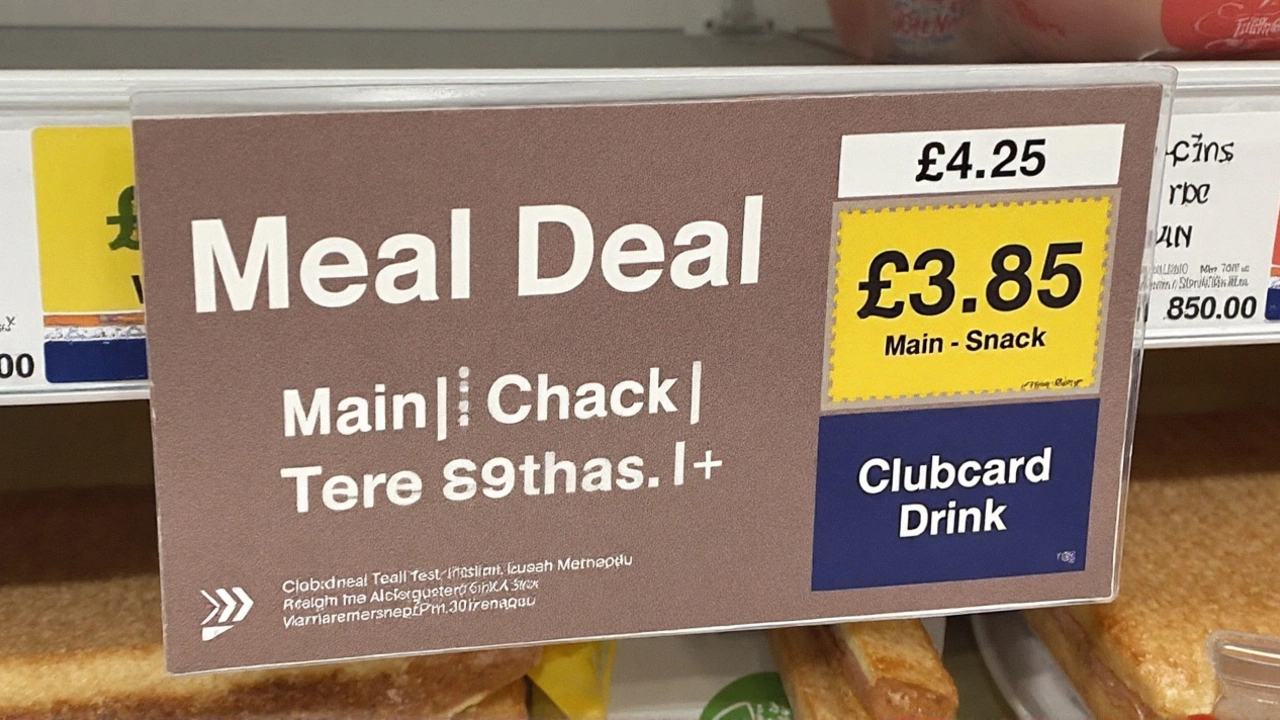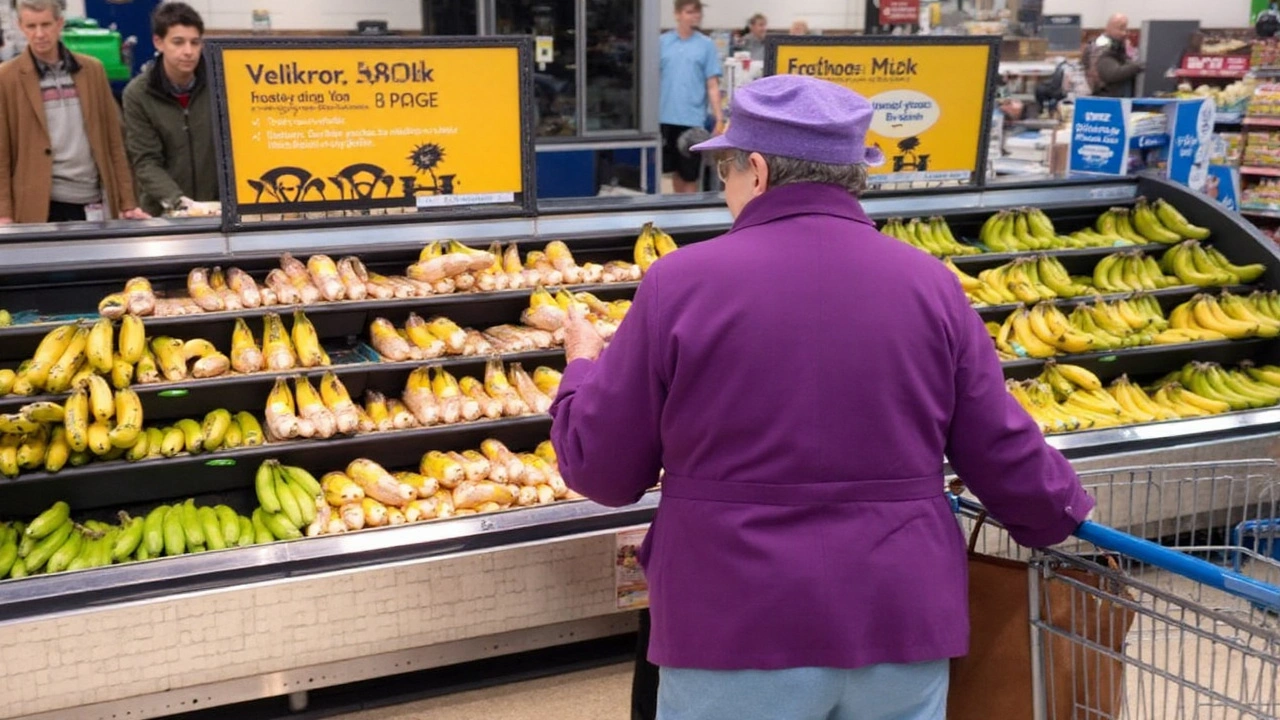Tesco primes for a fight as rivals close in
Tesco is cutting another £500 million from its cost base and sharpening prices as Britain’s biggest grocer gears up for what could be the most hard-fought year on the supermarket aisles since the last era of discount-led upheaval. CEO Ken Murphy says competitors have “upped their game,” and while he stops short of calling it an all-out war, the message is clear: the gap between the big four and the discounters is closing, and Tesco plans to hold its ground.
The trigger came earlier this year when Asda moved first with a more assertive pricing stance, nudging others to respond. Murphy calls it “rational intensification” — not slashing prices recklessly, but matching where it matters and refusing to blink on key products. Aldi’s UK boss, Giles Hurley, isn’t convinced. He’s called the current skirmish a “phoney war,” arguing he hasn’t seen dramatic moves from rivals. That split view captures the moment: shoppers are watching carefully, and the retailers know it.
So far, Tesco’s numbers show resilience. In the 13 weeks to 24 May 2025, like-for-like sales rose 5.1% to £12.3 billion, with food up 5.9%. Murphy told investors the chain has “responded very effectively” without dropping standards on service, quality, or new product launches. That last part matters. If the fight is only about price, the winner is usually the one with the lowest overheads. Tesco’s bet is that shoppers want sharp prices and a reliable, good-quality shop in one go.
The £500 million of extra savings is the next leg of a program that has already trimmed costs across stores, logistics, and head office. Where does the next chunk come from? People close to the plan point to deeper procurement savings with suppliers, better use of data to cut waste and improve availability, automation in depots, energy efficiency upgrades, and more simplification in central functions. None of this is flashy. All of it is designed to fund price competitiveness while offsetting higher taxes and general cost pressures hitting large retailers.
Inflation has eased from the spikes of the past two years, which changes the game. When prices are racing up, shoppers focus on finding stock and staying within a budget. When inflation cools, attention swings back to the pennies on each pack. That is where loyalty pricing and price-match schemes take center stage. Tesco’s Clubcard Prices and Aldi Price Match have become fixtures on shop floors, joined by Sainsbury’s Nectar Prices and a drumbeat of “price locked” campaigns across the market. The risk? Too much focus on loyalty-only discounts can confuse customers and attract scrutiny from regulators who want shelf labels to be transparent and comparable.
Murphy’s “rational intensification” line hints at the playbook: do the price-matching, hold key staples at keen levels, and keep private-label ranges strong, but don’t blow up the P&L to grab short-term headlines. Price wars can turn destructive quickly. Retailers burn cash, suppliers get squeezed, and availability can suffer. Tesco is trying to make it a contest of discipline rather than brinkmanship.
Still, the rivals aren’t standing still. Asda’s moves have pushed the big four to reassess promotions and base prices. Sainsbury’s has tightened its focus on loyalty-led deals and its own-brand improvement drive. Morrisons has cut the price of hundreds of everyday items more than once this year. Aldi and Lidl continue to open stores and push their private labels, taking share by being consistent on price and simple to shop. Meanwhile, Waitrose is leaning into quality and service to hold onto higher-spending customers. The battlefield is crowded, and each chain is talking to slightly different shoppers.
This isn’t Tesco’s first rodeo. A decade ago, the rise of the discounters forced a deep reset: fewer in-store counters, a bigger push into own label, and a sharper focus on everyday prices. The lesson then was painful but clear — scale helps, but it won’t save you if your price file drifts out of line. Today, Tesco’s scale across stores, online, and wholesale gives it buying clout and data advantages. The cost-cutting is there to make that scale count on the shelf edge.
What will shoppers actually see if this intensifies? Fewer flashy short-term promos and more stable low prices on popular items. More private-label options sitting next to brands, often at much lower prices. Clearer “price locks” on staples like pasta, cereal, milk, and toiletries. And faster resets when competitors shift — if Asda drops the price of a key line, expect Tesco and others to respond within days. If this turns into a long grind rather than a dramatic price plunge, that’s by design.
There’s also the question of quality. Murphy has been keen to stress that Tesco isn’t letting standards slip, because even small cuts to specs or reformulations can backfire. Shoppers notice if fruit is smaller, if meat is leaner than expected, or if a beloved branded product disappears from promotions for too long. The company says new product development will keep pace — think meal deals tweaked for value, more affordable premium ranges at entry points, and ready meals designed for tight budgets but decent taste. The aim is to deliver “good enough” as a minimum and “better than expected” often enough to keep loyalty sticky.
Supply chains are steadier than during the pandemic, but not risk-free. Shipping costs and some commodity inputs have been volatile, and geopolitical flashpoints still threaten long routes. Retailers are hedging energy, signing longer contracts on key ingredients where they can, and reworking ranges to avoid pinch points. The more stable the inputs, the easier it is to lock prices and keep confidence high at the till.
Regulators are watching. The UK’s competition watchdog has been probing price transparency and how loyalty pricing is presented, pushing for clearer unit pricing and fair comparisons. Any move that confuses shoppers or blurs the line between headline discounts and real savings could draw heat. After the “shrinkflation” wave — smaller packs at the same price — shoppers are primed to challenge anything that looks like a trick. Clarity matters as much as the number on the shelf.
On costs, there are headwinds that have nothing to do with rivals. Taxes and levies on large retailers, business rates, energy, and payroll bills have climbed in recent years. That creates a floor under prices that’s hard to shift. Cutting £500 million isn’t about boosting margins on its own; it’s the fuel for holding prices while absorbing structural costs that don’t move down easily. If the economy softens or unemployment ticks up, the pressure to keep baskets affordable will only rise.
Investors will read the 5.1% sales growth as a sign that Tesco is keeping customers and gaining volume, not just passing through higher prices. The split between food and general merchandise also matters. Food is holding up; non-food is harder work, especially big-ticket items. Online is stable, with delivery passes and click-and-collect smoothing costs, but the economics of e‑commerce remain tight. That pushes Tesco to keep nudging shoppers toward baskets that are large enough to make each delivery profitable.
There’s a softer factor too: trust. The brand built goodwill during the cost-of-living squeeze by amplifying price matches and dialling up promotions on staples. If the market narrative shifts to “phoney war,” Tesco will want to show that its moves are tangible — lower shelf prices, straightforward offers, and fewer hoops to jump through. Talk is cheap; receipts tell the story.
How do the next six months play out? Several signs to watch:
- Promotional intensity: Does the volume of multi-buys and loyalty-only discounts rise, or do we see longer price locks on everyday items?
- Private label penetration: Do own-brand lines increase share at the expense of branded goods across key categories?
- Supplier relations: Are there public disputes over terms and pricing, or quiet resets that hint at tougher negotiations?
- Store investment: Do rivals increase refits and openings, especially in convenience formats where quick top-up shops are won or lost?
- Online fees and passes: Are delivery charges adjusted to protect margins, or do grocers absorb more to keep volumes?
As for the question at the heart of this: is it a real war or theatre? The answer may sit in the subtle details — a 10p cut to a staple, a quiet expansion of entry-price ranges, a faster match to a rival’s move. Shoppers won’t see fireworks every week, but they will feel the tide. And if we do tip into a true price war, history suggests it will be long, grinding, and paid for with efficiency, not sudden sacrifice.
For now, Tesco is positioning itself as the steady hand: modest price cuts where they count, quality guarded, innovation alive, and costs taken out with discipline. Whether that’s enough will depend on how far Asda pushes, how fast Aldi and Lidl expand, and how patient shareholders are. The only certainty is that the Tesco price war narrative isn’t going away. It’s moving from talk to tactics, aisle by aisle.

What it means for households and the wider market
For families, the practical upshot could be smaller weekly bills on a basket built around own-label staples, with brands competing harder through promos rather than big list-price drops. Expect more “good, better, best” tiers in every aisle and a tighter gap between the entry tier and mainstream brands. For students and single-person households, ready meals and meal deals are likely to stay in focus, with formats tailored to stop waste and keep per-portion costs down.
For suppliers, the squeeze is real. Grocers will push for lower input costs and faster lead times, looking for productivity improvements and range simplification. Smaller producers with strong niche products may be protected, but mid-tier brands without clear differentiation will feel the heat. Those who can offer stability — reliable delivery, consistent quality, competitive pack sizes — will have an edge in negotiations.
For the broader market, a disciplined fight on price is healthier than a race to the bottom. It pushes everyone to modernise operations, invest in data and forecasting, and keep shelves full at fair prices. If discipline wobbles, profits can evaporate quickly, and store investment dries up. That’s why the industry keeps repeating Murphy’s phrase: rational intensification. It signals hard competition with a guardrail.
And for policymakers, the focus will remain on transparency. Clear pricing, honest pack sizes, simple loyalty offers, and consistent unit pricing help shoppers make good choices. When competition is fierce but fair, households benefit. The next few quarters will show whether Britain gets that version of the fight — or whether the phoney-war jibes turn into something louder.
